Nature and Wildlife of Tuscany – by Crossbill Guides
A warm welcome to this page about the nature and wildlife of Tuscany. It complements the Crossbill nature travel guide with the same name. This is an online Crossbill Guide ‘light’ for the armchair traveller. It offers some general insights and images to prepare you for your visit, plus some practical information, sites and a free route from the Crossbill Guide. Enjoy!
Tuscany, Italy’s garden, features an impressive array of natural habitats. Offshore, surrounded by the azure Tyrrhenian Sea, the gorgeous Tuscan islands are full of wildflowers, butterflies and amphibians. The mainland coast is equally attractive, with dunes and wetlands teeming with birds. The coastal Mediterranean scrub transitions to oak woodlands in the hills. Further inland, Tuscany’s agricultural landscape is home to an array of flowers and wildlife, while the backroads are a delight to the orchid and butterfly hunter. Further north and east the Apennine Mountains and Apuan Alps are a stunning backdrop to the lowlands and host extensive chestnut and beech forests, grasslands and heaths that are worthy of exploration. This is Tuscany – most often visited for its cities, it’s a bucolic landscape and excellent cuisine, yet equally attractive for its biological richness.
Landscape of Tuscany
Tuscany as a Biological Crossroads
Tuscany lies at the heart of the Mediterranean with flora and fauna from both the western and eastern Mediterranean and even species that are only found in Italy. Yet it is also enriched by being a transition between Mediterranean and temperate regions, with relict Alpine and central European species originating from the Ice Ages. Tuscan’s Tyrrhenian islands are home to many species otherwise limited to Corsica and Sardinia, whilst the waters are rich in marine species.
Tuscany: The Heart of Italy
Tuscany is a large triangular province in central Italy covering some 23,000 square kilometres. It is bounded in the west by a scattering of Mediterranean islands, and by a mountainous arc on the northern and eastern sides formed by the Apuan Alps and the Apennines. Southwestern Tuscany is slightly more arid and shares a hilly country with the adjoining regions of Umbria and Lazio. Topographically Tuscany is quite varied with a series of coastal hills and interior ridges that create a series of northwest to southeast trending ridges before reaching the Apennine mountains. The neatness of this picture is interrupted by some marshy valleys and a series of rivers that cut through the hills to reach the sea.
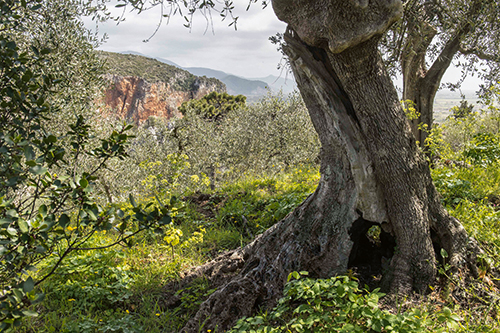
Rivers and Wetlands
Not surprisingly, Tuscany’s largest rivers – Arno, Ombrone, Serchio – have all been closely intertwined with, and shaped by humans who have relied on them and worked to tame them for thousands of years.
Several important coastal wetlands ranging from salty to brackish and even fresh under certain conditions remain along the coast including Orbetello Lagoon, Diaccia Botrona and Lago di Burano. One of the most renowned amongst naturalists is Orbetello Lagoon where saltwater and brackish wetlands were created on the inland side through the formation of two sandy tombolos. Thanks to the position of Monte Argentario, once an island before the sea currents created two sand bars on the leeward side thereby linking Argentario to the mainland.
The lagoon, as well as the other coastal wetlands, are well-known for hosting thousands of birds – flamingos, egrets, herons, Spoonbills, waterfowl and waders. The wetlands are also important as they are on an important migratory route. Birds that cross the Sahara follow the North-African coast along Tunisia, cross over to Sicily and follow the western Italian coast north, passing Tuscany’s coast.
Tuscan’s fertile valleys include a number of lakes and wetlands that are major wildlife magnets, especially birds. While some are much reduced since historic times, they remain attractive places to visit. The Palude del Fucecchio are among the largest of Italy’s freshwater wetlands
Spring and early summer visits are delightful with good numbers of waterfowl and waders, including egrets, herons, spoonbills and ibises as well as a diversity of shorebirds and songbirds. During wet cycles, wetlands will reemerge in basins that have formerly been drained such as Lake Bientina on the east side of the Pisan mountains. Lago di Montepulciano and Lago di Chiusi remain important wetlands in the southeastern border lands of Tuscany and both attract similar species (including Pygmy Cormorant). Even the small complex of wetlands in the plain just north of Florence, the Stagni di Focognano, are excellent spots for seeing both common and the occasional vagrant bird species.
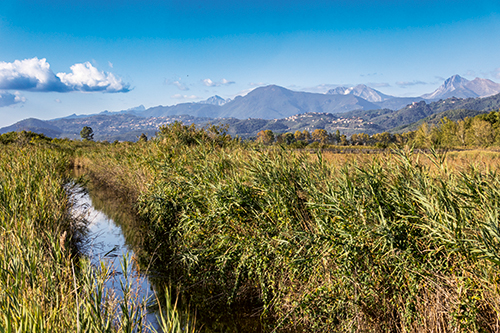
Macchia and Gariga
On the Tuscan islands and growing behind the sand dunes into the low hills or on the promontories of the mainland, the dominant vegetation is a scrub community unique to the Mediterranean basin.
Macchia tends to be an impenetrable habitat with an overstory 2-3 m high and a tangled un- derstory full of fragrant herbs and flowering plants that burst into colour in spring. The community is susceptible to fire, due to the high density of vegetation, naturally occurring oils in the leaves and extremely hot summer temperatures. Gariga is a lower version of scrubland.
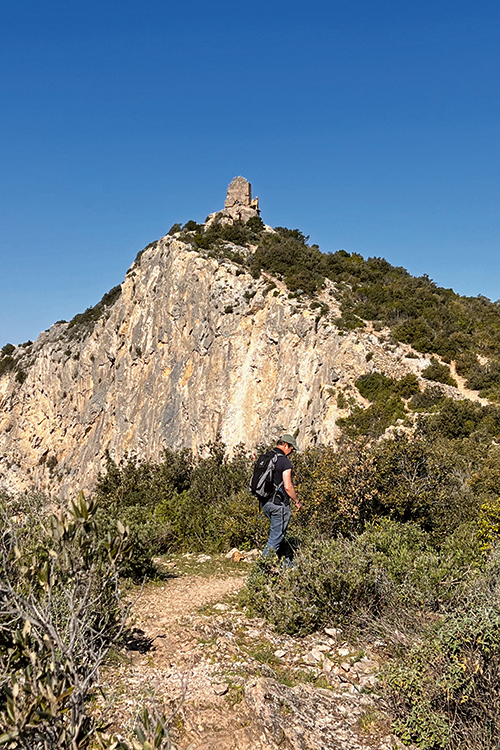
The best examples of macchia are found on the islands of the Tuscan Archipelago and on coastal promontories such as Punta Ala, Piombino, the mountains of the Uccellina and Monte Argentario. Gariga can be found on Elba, Capraia, Giglio as well as in a number of coastal mountains (Pisa, Livorno).
In spring, the macchia and gariga habitats are full of wildflowers, including many orchids. A variety of reptiles and birds (in particular small warblers) are uniquely adapted to living in this shrubby environment.

Agricultural Lands
While agricultural production in many parts of Tuscany, particularly in the plains, has become more intensive, mechanised and reliant on fertilisers and biocides, on most of the land traditional low-intensity agriculture continues mixed with orchards, hedges and overgrown edges. It is typical to find an abundance of spring and summer wildflowers, butterflies and other insects along the roadsides. It is not uncommon to find dozens of different butterfly species there too, especially if there are some unimproved, calcareous hillsides nearby. They typically contain a mix of widespread, usually warmth-loving species (Queen of Spain, Silver-washed, Weaver’s and Spotted Fritillaries, Common and Scarce Swallowtail and a variety of blues). Every now and again, there are Mediterranean species in the mix, like Two-tailed Pasha, Cleopatra or White-banded Grayling. Quails call from the fields, Short-toed Eagles drift over and Rollers dazzle whilst Hoopoe, Sardinian and Moltoni’s Warblers, Spotted Flycatcher, Red-backed Shrike, Cirl and Corn Buntings can be seen (or heard) in the nearby scrub.
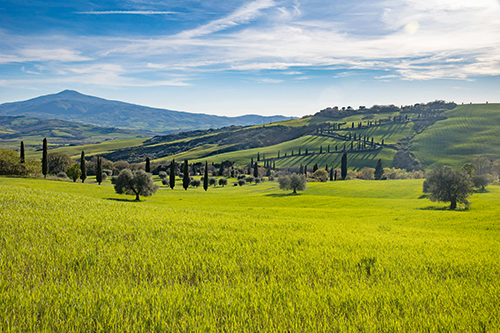
Oak Woodlands
Multiple species of Mediterranean and temperate oaks can be found in Tuscany’s oak woodlands. Near the coast, the macchia will create dense scrubby thickets that will transform into a Mediterranean woodland as one moves into the coastal hills. These woodlands are comprised of many of the same species, though with a bit of elevation, the Holm oak, Strawberry Tree, Tree Heath and other shrubs will grow taller and have the characteristics of a more open woodland.
Moving away from the coastal zone, a cooler and moister climate allows other oaks to replace the Holm Oak-dominated macchia and woodland. Turkey Oak (Q. cerris), Downy Oak (Q. pubescens) Sessile Oak (Q. petraea), and Hungarian Oak (Q. frainetto; further inland) along with Manna Ash and Hornbeam come to dominate this sub-Mediterranean woodland. A variety of Mediterranean shrubs (Tree Heath, Sage-leaved Cistus) form the understory and in low numbers.
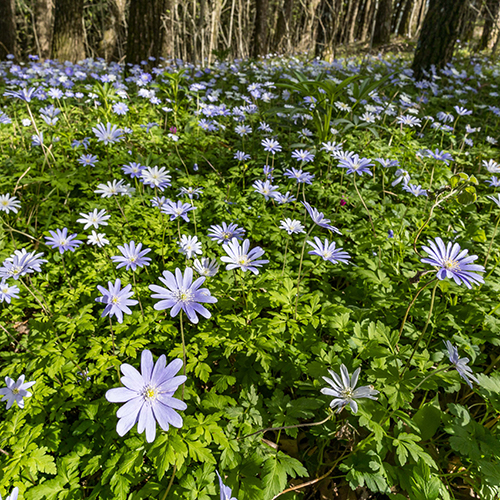
Beech Forests and Subalpine Grasslands
The shady world of the deciduous beech forest provides a relief from the hot sun of the lowlands during the Tuscan summer. Up the mountain slopes around 1,000 metres, the chestnut forests give way to Beech, often a bit lower on north-facing slopes. The beech forest is the upper woodland on the slopes of the Apuan Alps and Apennines just below the dry grass- lands or subalpine meadows. Along streams and near springs, the forest flora tends to be richer, with ferns and other water-loving plants and it is worth checking streams and ponds for Northern Spectacled Salamander and Italian Crested Newt, two endemics to the Italian peninsula, as well as an endemic subspecies of Alpine Newt. Among the birds that you are likely to find are Song and Mistle Thrush, Wood Warbler, Western Bonelli’s Warbler, Nuthatch, Coal Tit and Marsh Tit.
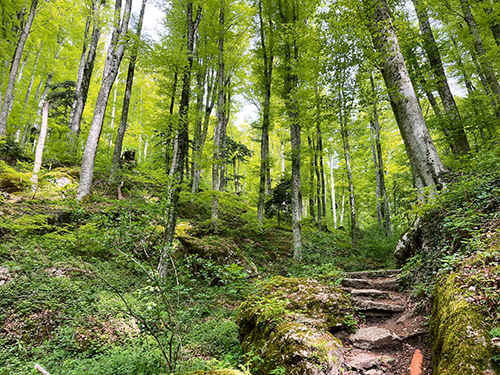
Emerging from the dense beech forest, you likely find yourself in patches of scrubby heath and open meadows. The plentiful dwarf shrubs are often mixed with Common Juniper, and Mountain Pine (which is a small, shrub-like species). In the right season, you can enjoy a profusion of alpine wildflowers including orchids, lilies, gentians, columbines and many others in these open habitats. Along south-facing ridgelines and on higher plateaus it is common to encounter dry wind-swept grasslands with species varying depending on whether the soils are base or acidic. The upper reaches of the craggy summits of the Apuan Alps or the open ridgelines of the Apennine Mountains will feature an unusual flora as well as stunning vistas.

The naturalist top 10
Ten highlights of your visit to Tuscany.
Tuscany’s countryside, with its cypress lanes, hilltop mansions and ancient towns and villages, is world famous and deservedly a highlight on your trip.
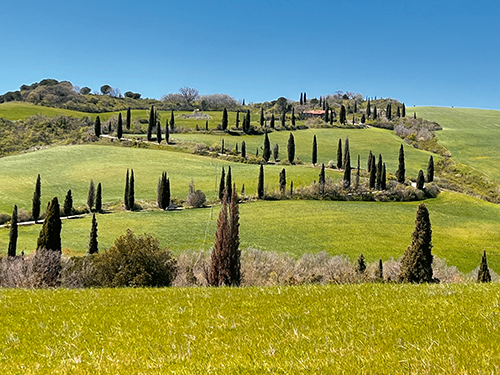
Tuscany has a surprising array of wetlands, both on the coast and in the interior valleys. Collectively, they form a superb birdwatching destination, with species ranging from Squacco Heron to Glossy Ibis, and from Pygmy Cormorant to Greater Flamingo.
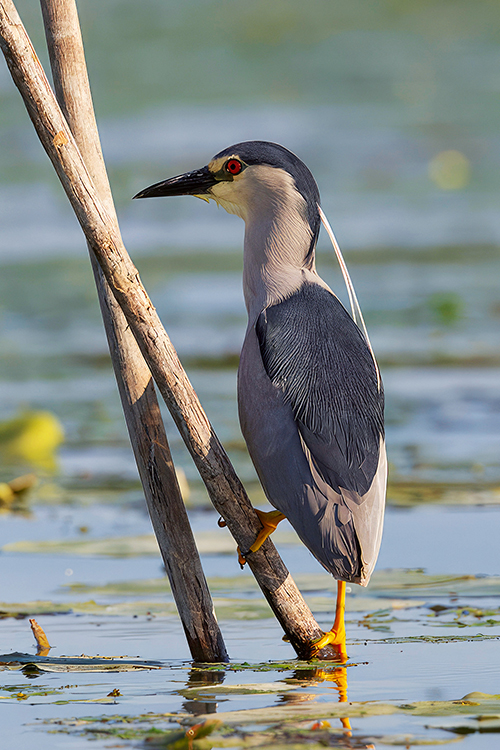
In spring, Tuscany is a superb region for orchids, with over 80 species present. Many grow simply on the side of the road.

The Mediterranean islands of Elba, Caparaia or Giglio are extremely picturesque and boost a flora and fauna with species shared only with Corsica and Sardinia.

The spectacular, rugged mountain ranges of the Apuan Alps and Apennines invite you for long forest walks.

The high mountains sport heathlands and Alpine meadows packed with butterflies and numerous wildflowers.

Granted, this is only for the dedicated naturalist, but a search for the unique amphibians of Tuscany is a truly Tuscan delight, with species like Ambrosi’s and Italian Cave Salamanders, Norther Bridled Salamander and Tyrrhenian Painted Frog.
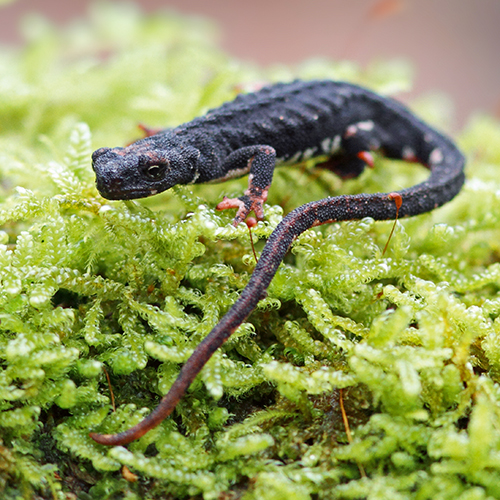
Enjoy the wildlife in and around the small hamlets and villages of Tuscany, with its many Cirl Buntings and Redstarts, its butterflies and orchids in the roadsides, its geckos, praying mantises and many other delights.

Tuscany has a range of undisturbed rivers, with rare dragonflies, butterflies and wildlife in general. In summer, there is no place better to be, than lazing on the bank of the river in the shade of the alder trees.

Tuscany abounds in private nature reserves, many of which are managed by WWF and accessible only on a guided excursion with a knowledgeable ranger.

Birds, Orchids, Salamanders – The Flora and Fauna of Tuscany
East Meets West
Tuscany sits at the Mediterranean’s heart and is enriched by species from both the western and eastern parts of the basin. Typical examples of Western Mediterranean species are Red-legged Partridge, Melodious Warbler, Cork Oak and Umbrella Pine whilst Pygmy Cormorant, Four-lined Snake, Sparse-flowered Orchid and Bladetail (a dragonfly) serve as examples of eastern species. It is important to note that some of these are scarce or occur in just a few spots that meet the needs of these species.
Italian Endemics
Quite a few species in Tuscany, often considered to be the most attractive or special ones, are those that are restricted to Italy, or just a part of Italy. Whilst Tuscany largely lacks the ‘narrow endemic’ species (those exclusive to only a part of the province), there are quite a few Italian endemics. Good examples are Northern Spectacled Salamander and Italian Cave Salamander, Italian Festoon (a butterfly), Yellow Milkwort, Bertoloni’s Orchid and the crabronifera subspecies of Eyed Bee Orchid.

Tyrrhenian Biome
A very special subzone of the Mediterranean is the Tyrrhenian biome. It not only covers the islands of Sardinia and Corsica (outside our area), but also the Tuscan archipelago and a smaller section of the mainland coast. This is a separate zone because of its high number of local endemics, which evolved here as the Tyrrhenian Islands were isolated from the mainland for a long time. Examples of this zone’s specialities are Bellier’s Blue (its subspecies villai only occurring on Elba), Corsican Finch, Marmora’s Warbler and a large range of wildflowers, including the impressive Scarce Tongue Orchid.
Temperate Europe Meets the Mediterranean
Ringing the northern and eastern borders, the Apennines and the Apuan Alps are an important stronghold of central European species, especially from the Alps. Some of them are widespread (e.g. Beech trees), whereas others are true relics that occur in only a few places (e.g. Pool Frog and Frog Orchid). There are also quite a few relict Alpine species, as the presence of White Fir, Trumpet Gentian and Alpine Chough testify).
Large areas in central Tuscany have a typical transition between Mediterranean and temperate regions, and here too, there is quite a large range of species that are rare or absent from the hot coastal areas and the mountainous parts. This biodiversity is often considered typical of warm-temperate or sub-Mediterranean realm and the most eye-catching examples of this diversity are the two dominant oaks of these parts: the Turkey and the Downy Oak. Among the birds, Cirl Bunting and Serin serve as good examples of this too.
Most of the flora and fauna of this region, including the mentioned oaks and birds, range rather widely over southern Europe. Whereas this central part of Tuscany holds a wide range of species, it is not the area where the rarities are found.
Birds of Tuscany
Tuscany is not one of the classic top birding destinations in Europe, so it may come as a surprise that, with over 400 species recorded, this region has a remarkably rich birdlife. Tuscany holds a fine range of wetland birds, mixed with species of Mediterranean and temperate European scrublands, forests, agricultural land and mountains.
The coastal wetlands are perhaps the top destinations due to the plentiful water birds, yet the forests and agricultural lands of the Tuscan hills provide an excellent range of raptors, warblers, larks, pipits, buntings and colourful birds such as Bee-eater, Roller and Hoopoe. The Tuscan islands are a magnet for migrants, including numerous vagrant species.

The islands hold specialities like Marmora’s Warbler, Corsican Finch, Tyrrhenian Spotted Flycatcher (a subspecies of Spotted Flycatcher) plus shearwaters and other marine birds. The scrubby macchia holds Sardinian, Dartford, Moltoni’s and other warblers. Moltoni’s Warbler is one of a recent three-way split of the Subalpine Warbler group (Western Subalpine occurring in the extreme northwest of Italy and Eastern Subalpine occurring in the Tuscany’s interior southeast). The montane areas are not particularly diverse but hold their special treats such as Alpine Chough, Golden Eagle and migrant Dotterel and Ring Ouzel.

Butterflies
Tuscany is home to a large variety of species, including some rarities and true specialties. Within the region, there are clear butterfly hotspots. One of these are the high, limestone areas of the Apuan Alps, which support a different butterfly fauna than the acidic mountains of the Apennines. Additionally, the Tuscan Archipelago and mainland coast, while not endowed with many species, hold a number of interesting butterflies. The large area of hills and lowlands of central Tuscany has a wonderful range of species but lacks the diversity of the mountains and the rarities of the coast.
The butterfly season peaks in June and July when temperatures can rise above thirty degrees on hot days. On such days, the butterflies are most active in the mornings and this is the time you should be out searching for them. During warm periods, spend your afternoons at higher elevations.
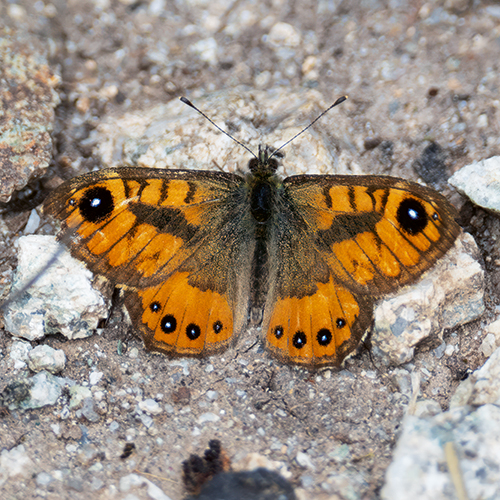
Orchids
The orchids are Tuscany’s botanical delight in spring. Over 80 species have been recorded (although due to taxonomic difficulties, experts differ in their opinions on how many species there really are). This makes Tuscany one of the finer regions in Europe in terms of orchid diversity.
Tuscany has a blend of widespread central European and Mediterranean orchids, the former being dominant in the interior of the region and the latter at the coast and on the islands. The large area of hilly country that forms the bulk of Tuscany has a blend of the two.
Within the Mediterranean group, there are some sought-after species that are typical of southern Italy and Greece and reach their northwestern range limit in Tuscany. Examples are the Sparse-flowered Orchid (Orchis pauciflora), Bertoloni’s Orchid (Ophrys bertelonii) and the Ophrys crabronifera. Additionally, there are some species that are unique to the Tyrrhenian islands and the adjacent mainland (e.g. the impressive Scarce Tongue Orchid; Serapias neglecta). All in all, plenty to see!

Amphibians and reptiles
The list of frogs, toads, newts and salamanders is quite large and includes almost 20 native species. Especially among the salamanders, there are some that are not found outside (a small part) of Italy. Undoubtedly, this has to do with the geological isolation of the country. Although Italy is attached to the mainland, it wasn’t for a long time, and the Alps form a barrier that makes spreading to the rest of Europe difficult.
The Northern Spectacled Salamander is one such Italian endemic that occurs in hills and mountains in deciduous forests with lots of leaf litter. More secretive are Ambrosi’s Cave and Italian Cave Salamanders. In contrast to what their names imply, they are not exclusively cave dwellers, rather, they prefer cool, damp and shady places in general.
Tuscany has a good range of reptiles, including three species of gecko (Moorish Gecko, Turkish Gecko and Leaf-toed Gecko), various snakes (including the stout Ladder Snake and Western Whip Snake) and many lizards.
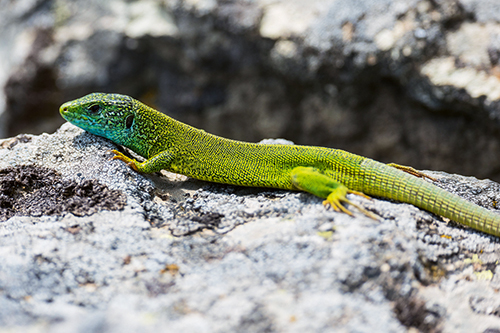
Top 10 species
Ten superb plant and animal species of Tuscany.
One of the oldest amphibian lineages in Europe. This species is only found in central and northern Italy.
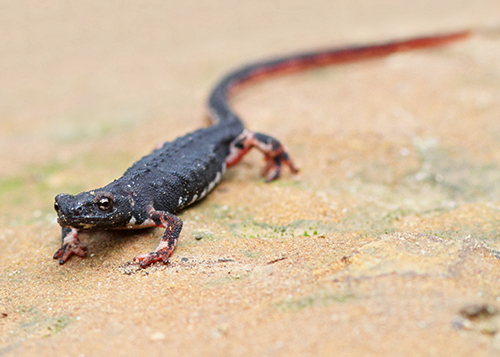
Introduced in ancient times, within Europe this nocturnal mammal is exclusively found in Italy.

One of the orchid species of the argolica or ‘eyed bee orchid’ group, native to southeastern Europe. Tuscany holds the most northwestern populations of this plant.

Closely related to Citril Finch, the Corsican Finch lives only on Corsica, Sardinia and several islands of the Tuscan archipelago.

All of Europe’s cave salamanders are found on Sardinia and the Italian mainland up to Provence in France. Many only live in one or a few cave systems, but the Italian Cave Salamander also inhabits damp, shaded rocks and stonewalls.

Another highly restricted bird, closely related to both Western and Eastern Subalpine Warblers.

The delight of Tuscany and many other Mediterranean areas – the colourful Bee-eater is found throughout Tuscany.
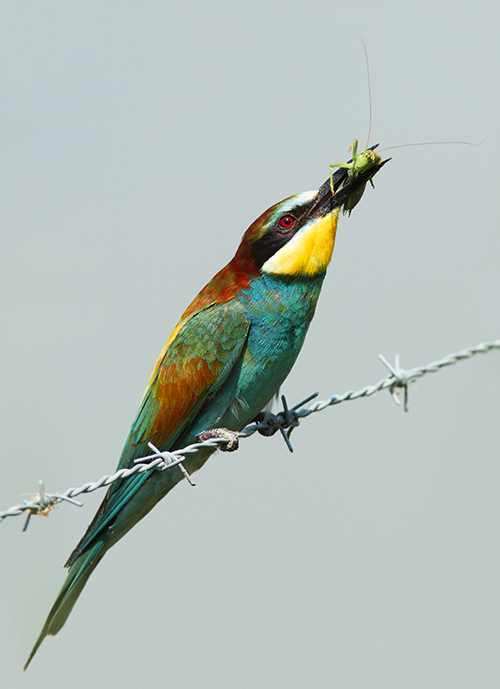
The Tuscan islands hold a few butterflies that occur nowhere else. The Elban Heath is one of them.

Another delightful orchid, the Bertoloni’s Orchid, recognisable by its deep pink petals and shiny ‘saddle’ in the lip. It is almost confined to Italy.
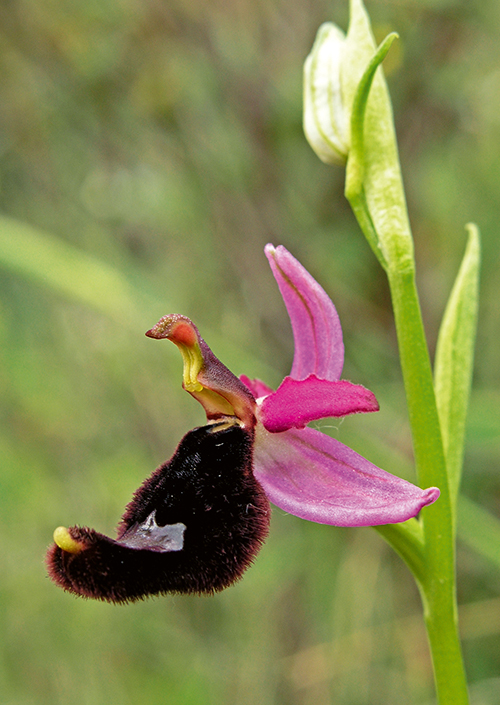
As can be expected from a Mediterranean region, Tuscany has a good number of reptiles. The large Four-lined Snake is another southeastern species that reaches its northwestern limit in Tuscany.

Routes and practicalities
The car provides the greatest flexibility in visiting places off the beaten track. However, a combination of trains and buses can bring you deep into the countryside, from where walking or cycling will allow one to access many areas.
Sustainable tourism – Do’s & Don’ts
Do
- Buy local products from the agriturismos, farmers and other locals. It is easy, always surprising and it supports traditional land use.
- Support the local ecotourism community by staying in local guest houses, hiring local guides, booking a bird hides, etcetera.
- Visit nature preserves (paying the required entrance fees), natural history museums and talk to the people there and see in what other ways you can support.
- Show that you have come for wildlife and always be friendly to local people; in other words be an ambassador of nature tourism.
Don’t
- Obviously, don’t disturb wildlife. Especially the larger mammals and raptors are easily spooked, so keep a low profile.
- Be careful when driving. Driving slow helps you to avoid collision with wildlife and will also offer good viewing options.
The book
The Crossbill Guides are the most comprehensive nature travel guides available. Each Crossbill Guide covers in-depth descriptions on landscape, habitats, geology and all the species groups, and links these to routes where this can be seen.
These routes are typically a mixture of walking and car routes with stops and short walks. Combined, they cover all the sites for birdwatching, butterflies, dragonflies, plants, mammals and reptiles. They are also set out to give you the finest examples of the ecosystems and geological features.
The Crossbill Tuscany Guide covers:
- 280 pages
- Landscape history
- Ecosystems
- Geology
- Flora and Fauna
- Where to watch birds
- Finding mammals, reptiles, butterflies, dragonflies and wildflowers
- 23 detailed routes with tips for finding wildlife and 16 site descriptions
The author
Graham Chisholm (USA) has been dedicated to the conserva- tion movement for more than 30 years in California and Nevada (USA). Through his work in lead- ership positions at The Nature Conservancy and Audubon he has help put over 150,000 hectares into permanent conservation. Ever since having lived in Italy at a young age, he has maintained a close connection to Italy and the Mediterranean.
























